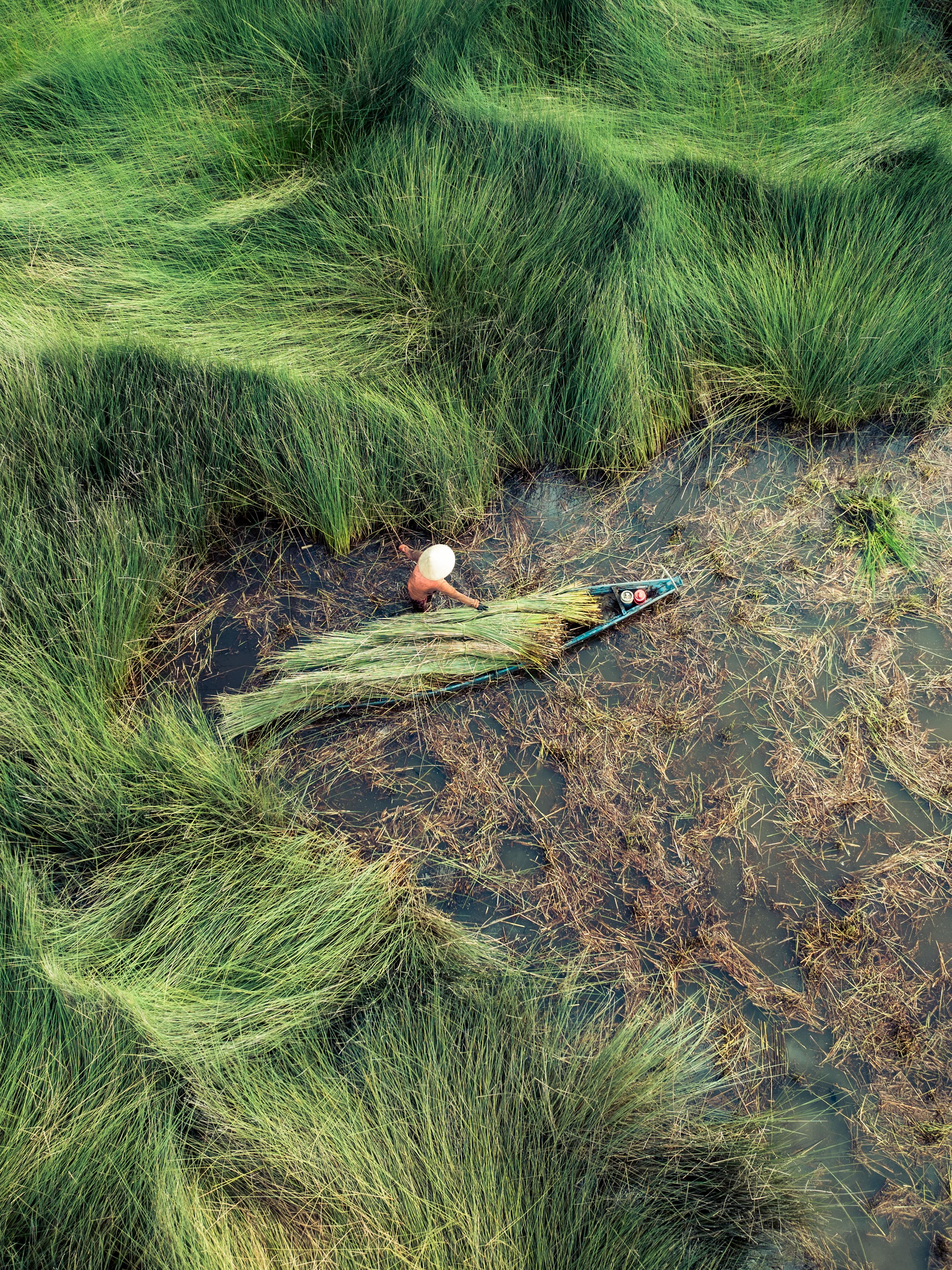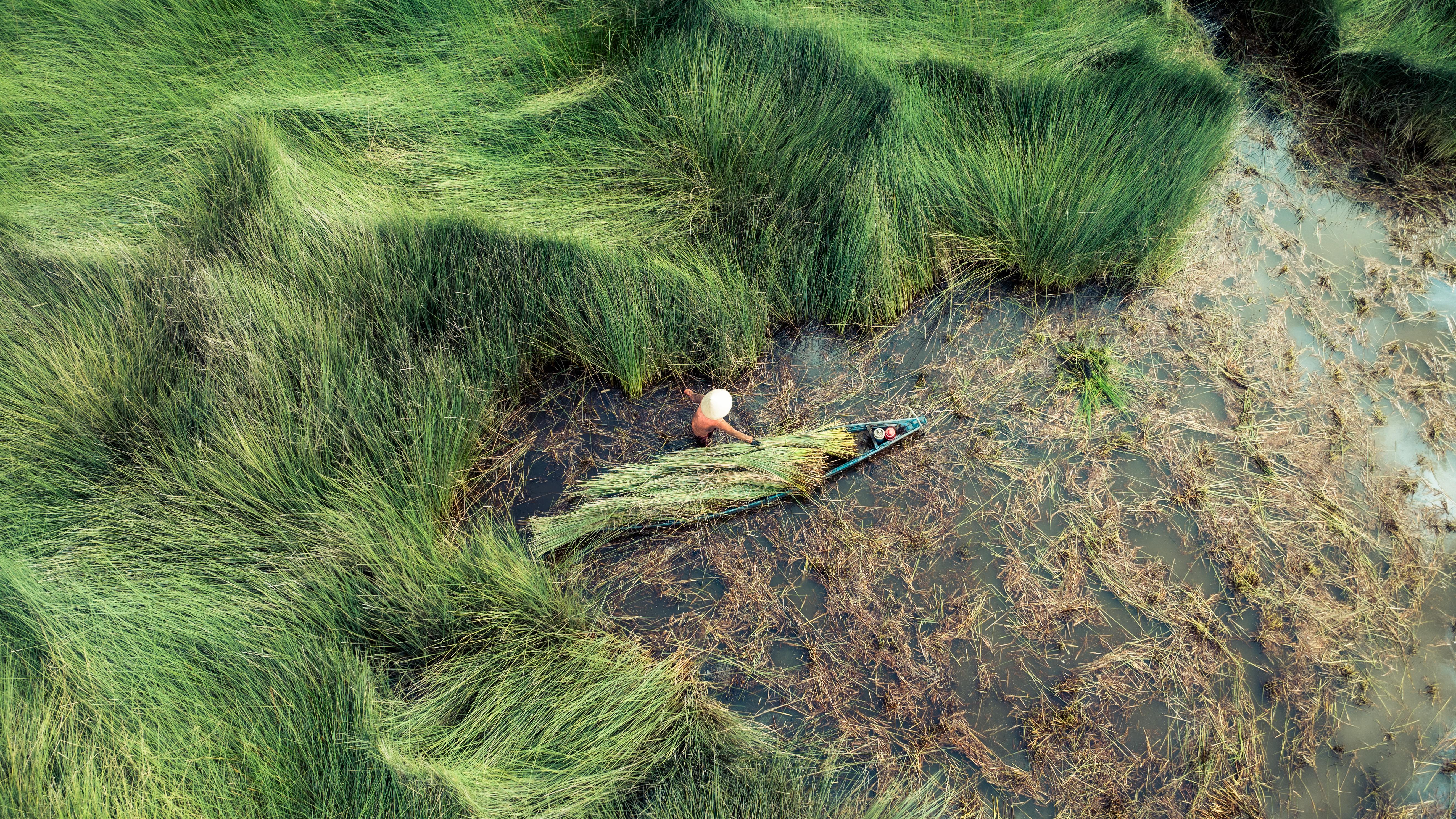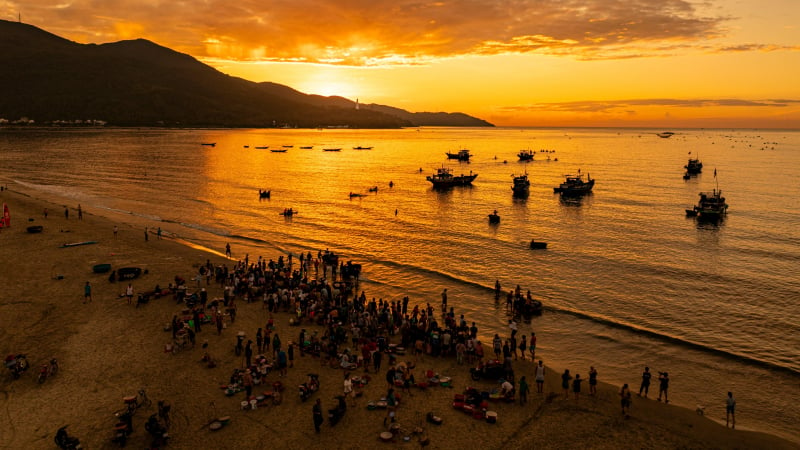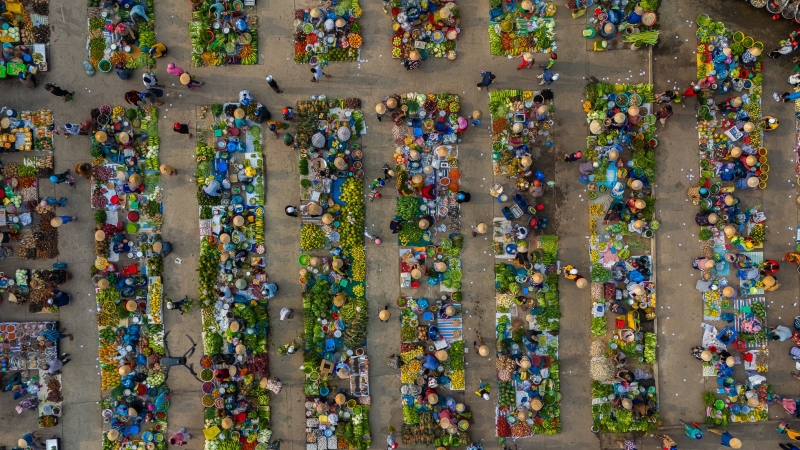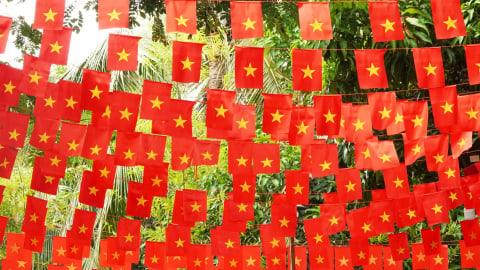In a vast alum land with lush green sedge grass, the lives of Long An people (now Tay Ninh) are closely tied to wild grass which they cherish like gold. From the early morning, the sound of laughter and chatter resounds in the fields. The nimble hands cutting grass, the neatly tied bundles of sedge grass, the people slowly returning when the sun is at its zenith... all create a highlight of the persistent and vibrant life of the Southern countryside.
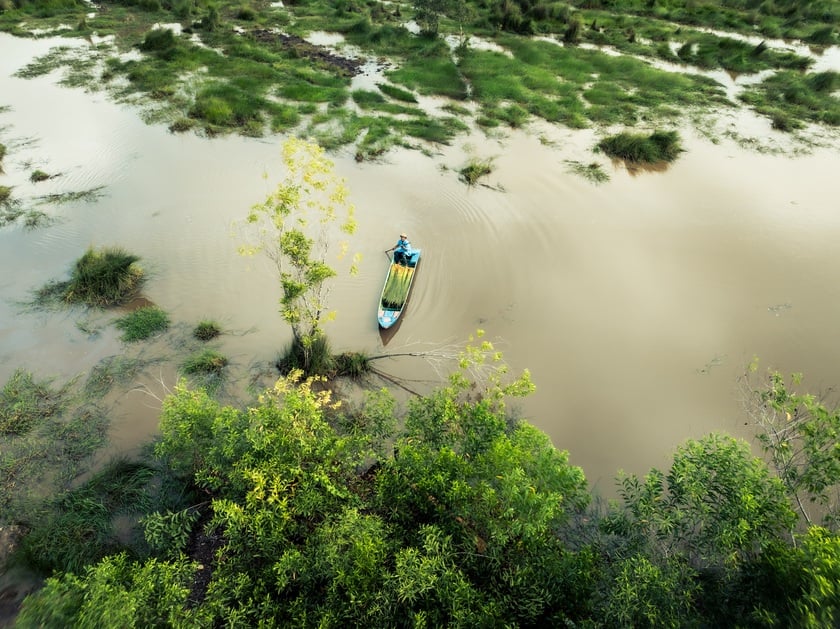
Sedge field seen from above – a rustic picture of labor in the countryside of Long An
From a bird’s eye view through the lens of Nguyen Hai Trieu – a young photographer born in 2000 from Tay Ninh, the sedge harvest season appears like a vivid picture. The endless green of the grass, dotted with the silhouettes of diligent workers, has created a beautiful yet simple image.
Sharing with Travellive, Hai Trieu said: "Even though I am a stranger from far away, when I hold the camera to capture this moment, I always feel the intimacy and closeness. The aunts and uncles, despite working hard in the midday sun, always have smiles on their lips. They often ask: What I did, did you take a good picture? Those simple words really touched me. It is that sincerity and optimism that creates a very unique beauty for this land and is what I want to preserve through each photo."

The silhouettes of people in the green fields are like vivid highlights in the salty nature.

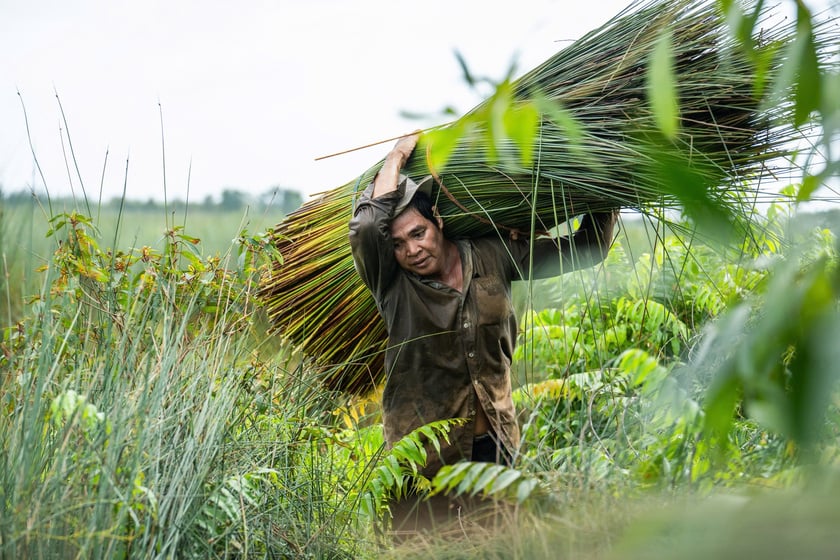
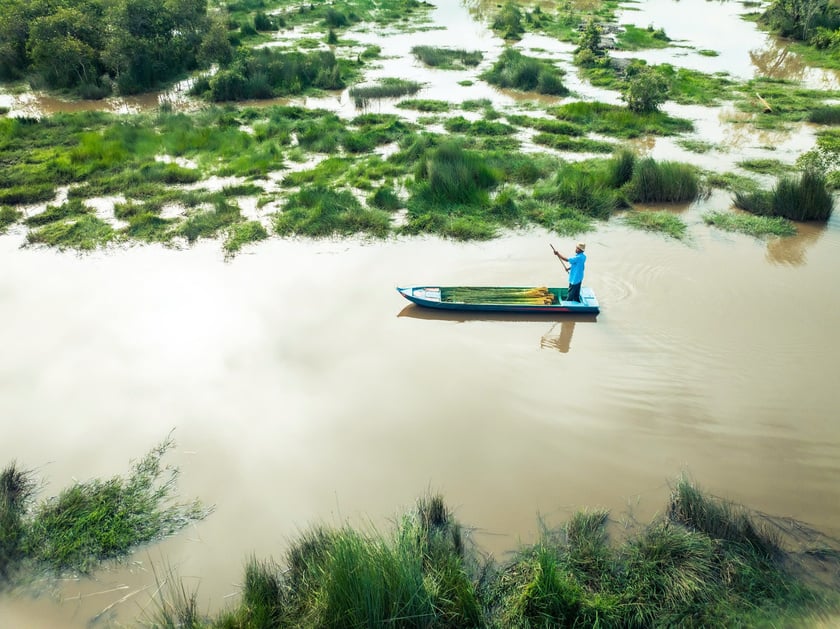
During flood season, sedge grass grows lush green, people are bustling to enter the harvest season.
Local people often harvest sedge during the flood season, when the plant grows the most. Sedge, also known as sedge, has a tubular stem, grows naturally on alum-contaminated soil, and can reach nearly 2 meters in height when mature. Depending on the terrain, people will shake the grass right in the field or bring it ashore by boat for processing. After harvesting, the grass is classified according to height and quality, then sold to traders who transport it to craft villages.
Sedge is not only a source of livelihood, but also a “green thread” connecting people to the land, crops and memories. On the alum soil that is difficult to cultivate, this grass has nourished many generations. Despite the rapid urbanization, green grass carpets still persistently cover the low-lying areas, as an inseparable part of Long An countryside.



Mature sedge plant is up to 2 meters tall, has tubular stem, brown flowers - a specialty of alum soil.
After being pressed and dried, sedge becomes a raw material for traditional craft villages specializing in the production of handicrafts such as mats, cushions, handbags, sedge hats... In addition, many brands take advantage of this to produce biological straws, a sustainable and environmentally friendly direction. From the primitive bundles of grass in the fields, through the hands of farmers and artisans, new values are born, both preserving traditional crafts and opening the door to export to domestic and international markets.
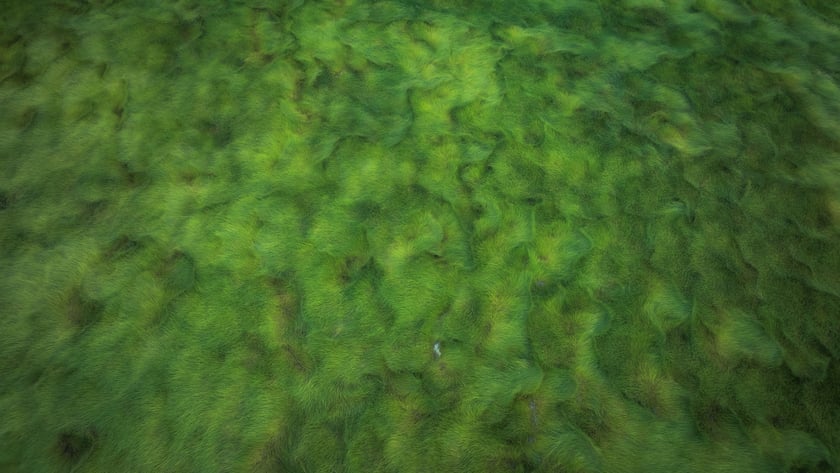
Despite the acidic soil, the sedge grass is still green like a part of the soul of Long An countryside.
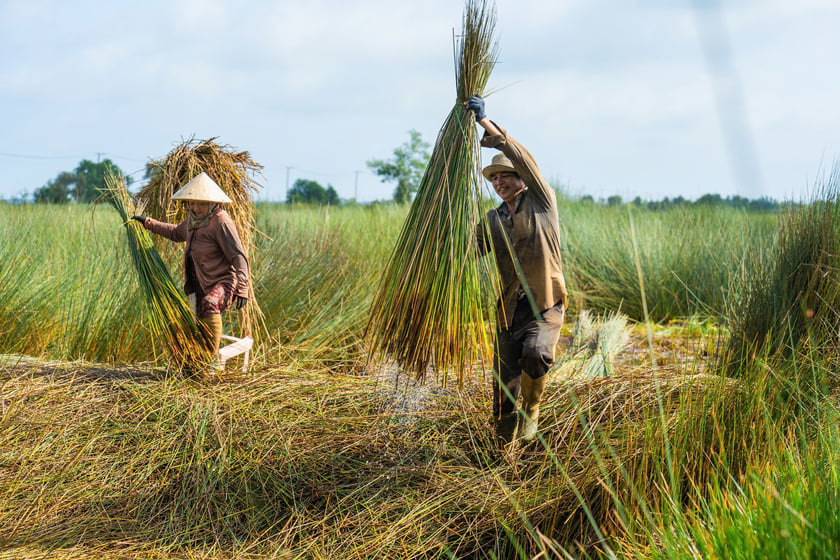
The seemingly barren lowland is where sedge grows persistently.

People shake the grass on the bank to clean it before drying and pressing it.
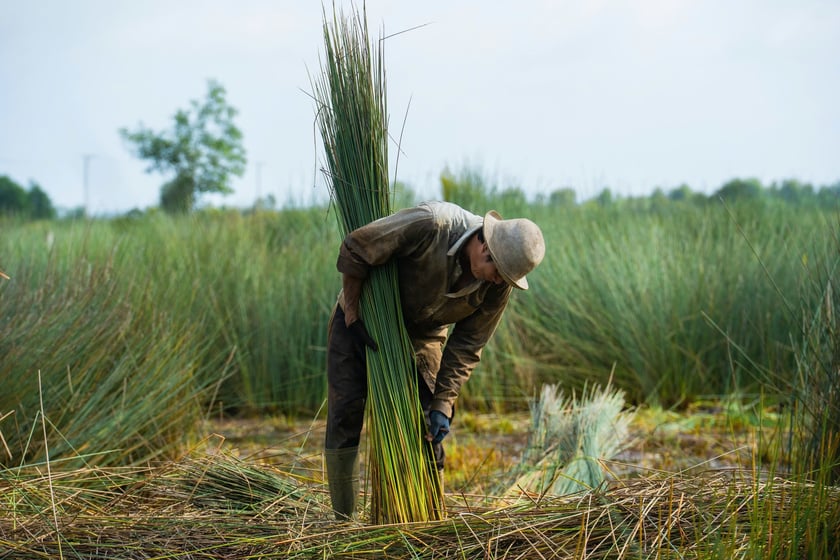
After being pounded and dried, sedge becomes raw material for handicraft products for export.
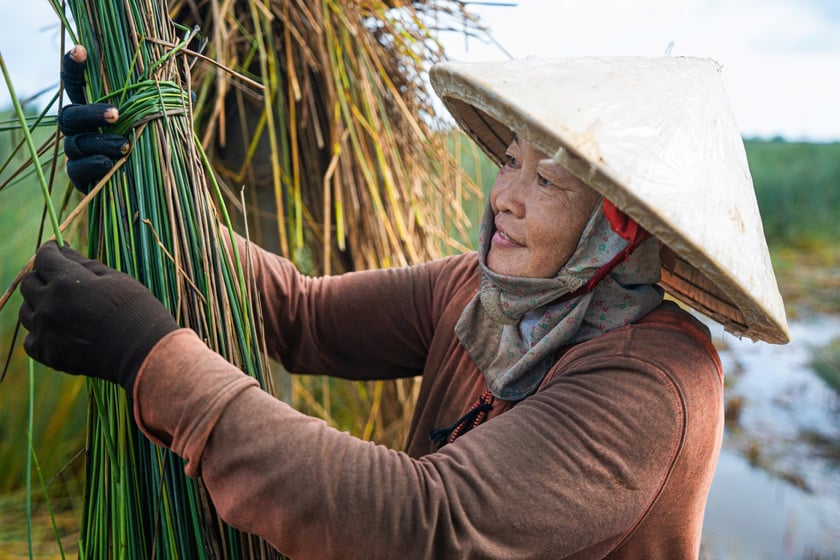
Not only a livelihood, sedge is also a way of life, a memory of the West.
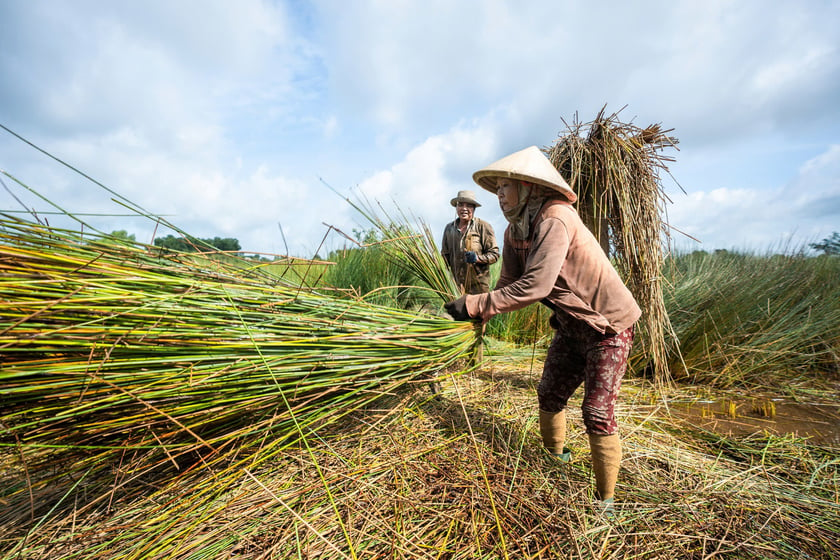
Simple farmers quietly cultivate green on poor alum soil








